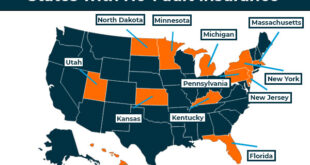High-Risk Loan: Basics, Benefits, and Navigate Them High-risk loans can be a viable option for individuals or businesses that may not qualify for traditional financing. However, these loans come with their own challenges, including higher interest rates and stricter repayment terms. In this comprehensive guide, we will explore everything you need to know about high-risk loans, their advantages and drawbacks, tips for managing them, and answers to frequently asked questions.
What Is a High-Risk Loan?
A high-risk loan is a type of financing extended to borrowers who may not meet the creditworthiness criteria of conventional lenders. These loans are often offered to individuals with poor credit histories, limited income stability, or businesses with uncertain prospects.
Characteristics of High-Risk Loans
- Higher Interest Rates
High-risk loans typically come with higher interest rates to compensate lenders for the elevated risk. - Shorter Loan Terms
These loans often have shorter repayment periods, requiring borrowers to pay off the debt quickly. - Collateral Requirements
Some high-risk loans are secured, meaning borrowers must provide assets as collateral. - Flexible Approval Process
Despite the risks, lenders may relax requirements such as minimum credit scores or income verification.
Types of High-Risk Loans
- Payday Loans
Small, short-term loans with high interest rates and quick repayment schedules. - Bad Credit Personal Loans
Tailored for individuals with low credit scores but often with high fees. - Business Loans for Startups
Offered to entrepreneurs with unproven track records or risky business models. - Subprime Mortgages
Home loans for borrowers with poor credit history.
Advantages of High-Risk Loans
- Access to Funds: Provides financing when traditional options are unavailable.
- Fast Approval: Often features quick application and funding processes.
- Credit Building Opportunity: Helps improve credit scores with timely repayments.
Disadvantages of High-Risk Loans
- High Costs: Elevated interest rates and fees can lead to significant repayment amounts.
- Risk of Asset Loss: Secured loans put collateral at risk in case of default.
- Debt Cycle Risk: Borrowers may fall into a cycle of borrowing and repayment struggles.
How to Manage High-Risk Loans Effectively
- Evaluate Necessity: Only borrow if absolutely necessary and for essential purposes.
- Understand Terms: Carefully review interest rates, fees, and repayment schedules.
- Compare Options: Look for lenders offering better terms or lower costs.
- Avoid Overborrowing: Only borrow an amount you can realistically repay.
- Build Emergency Savings: Prepare for unforeseen expenses to avoid additional loans.
Alternatives to High-Risk Loans
- Credit Union Loans: Often more affordable than traditional bank loans.
- Peer-to-Peer Lending: Offers competitive rates and flexible terms.
- Secured Loans: Borrowers with assets can access lower interest rates.
- Family or Friends: Consider informal loans with agreed terms.
Tips for Successfully Managing High-Risk Loans
- Budget Diligently: Monitor income and expenses to ensure timely payments.
- Negotiate Terms: Seek flexibility from lenders if you face payment difficulties.
- Improve Credit: Take steps to enhance your credit score for better future options.
- Automate Payments: Set up automatic payments to avoid missed deadlines.
- Seek Financial Advice: Consult experts for strategies to manage debt effectively.
10 Tips for High-Risk Loan Management
- Understand Your Financial Needs.
- Research Lenders Thoroughly.
- Opt for Fixed Rates Where Possible.
- Monitor Credit Reports Regularly.
- Avoid Predatory Lenders.
- Check for Hidden Fees in Loan Agreements.
- Develop a Debt Repayment Plan.
- Use Loans Only for Essential Expenses.
- Communicate with Lenders About Financial Issues.
- Seek Non-Profit Debt Counseling Services.
10 Frequently Asked Questions About High-Risk Loans
- What is a high-risk loan?
A loan extended to borrowers with lower credit scores or higher financial risk. - Who qualifies for high-risk loans?
Individuals or businesses with poor credit or inconsistent income. - Are high-risk loans always unsecured?
No, they can be secured or unsecured, depending on the lender. - What are the typical interest rates?
Rates vary but are generally higher than traditional loans. - Can high-risk loans improve credit scores?
Yes, if payments are made on time. - What’s the risk of defaulting on these loans?
Higher costs, damaged credit, or loss of collateral. - Are payday loans a type of high-risk loan?
Yes, due to their high costs and short repayment terms. - How can I find reputable lenders?
Research online reviews, verify licensing, and compare offers. - What are common fees associated with these loans?
Origination fees, late payment fees, and prepayment penalties. - Are there legal protections for borrowers?
Yes, but they vary by region. Borrowers should review local regulations.
Conclusion
High-risk loans can serve as a financial lifeline for those who lack traditional borrowing options. However, their high costs and associated risks demand careful consideration. By understanding the terms, comparing lenders, and practicing diligent financial management, borrowers can minimize risks and make the most of these loans.
While high-risk loans are not ideal for every situation, they can be a stepping stone to achieving financial goals when handled responsibly. Always weigh the pros and cons, explore alternatives, and make informed decisions to protect your financial future.
 Gerbang Finance
Gerbang Finance

